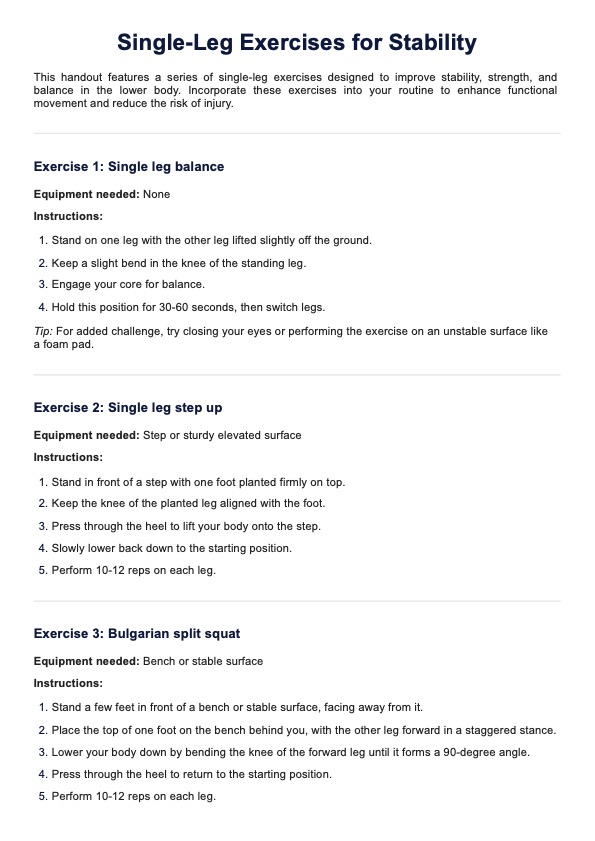To improve single-leg stability, focus on exercises that target the muscles surrounding the hip, knee, and ankle joints, such as single-leg squats and balance exercises like single-leg stance.

Single Leg Exercises for Stability Handout
Improve your balance and strength with these single leg stability exercises. Download Carepatron's free PDF handout with examples to get started on your fitness journey.
Use Template
Single Leg Exercises for Stability Handout Template
Commonly asked questions
Exercises such as single-leg deadlifts, lunges, step-ups, and single-leg balance drills can help increase leg stability by strengthening the muscles responsible for stabilizing the lower body.
Instability on one leg can be due to muscle weakness, poor balance, or neuromuscular control issues. To improve stability, it's important to address these factors through targeted exercises and practice.
EHR and practice management software
Get started for free
*No credit card required
Free
$0/usd
Unlimited clients
Telehealth
1GB of storage
Client portal text
Automated billing and online payments











